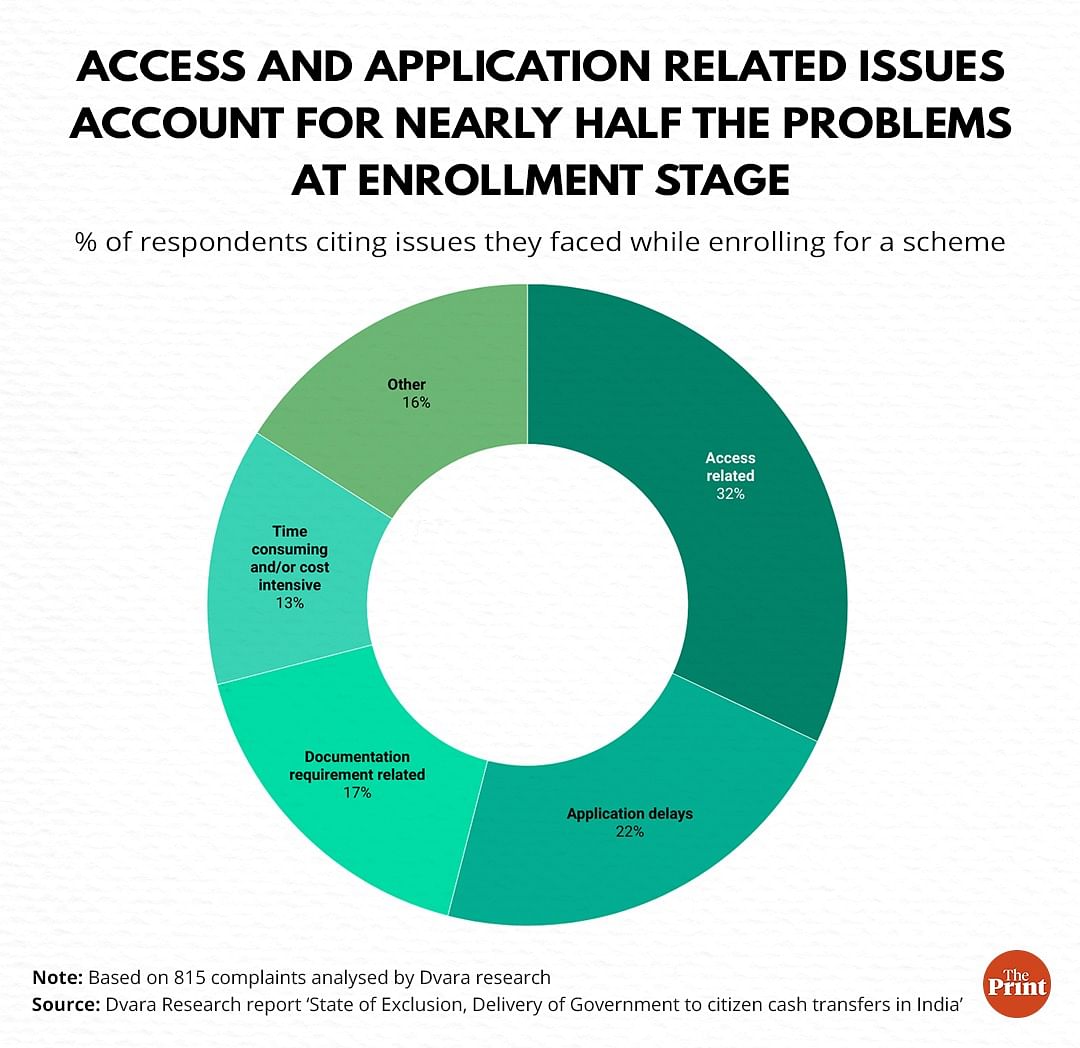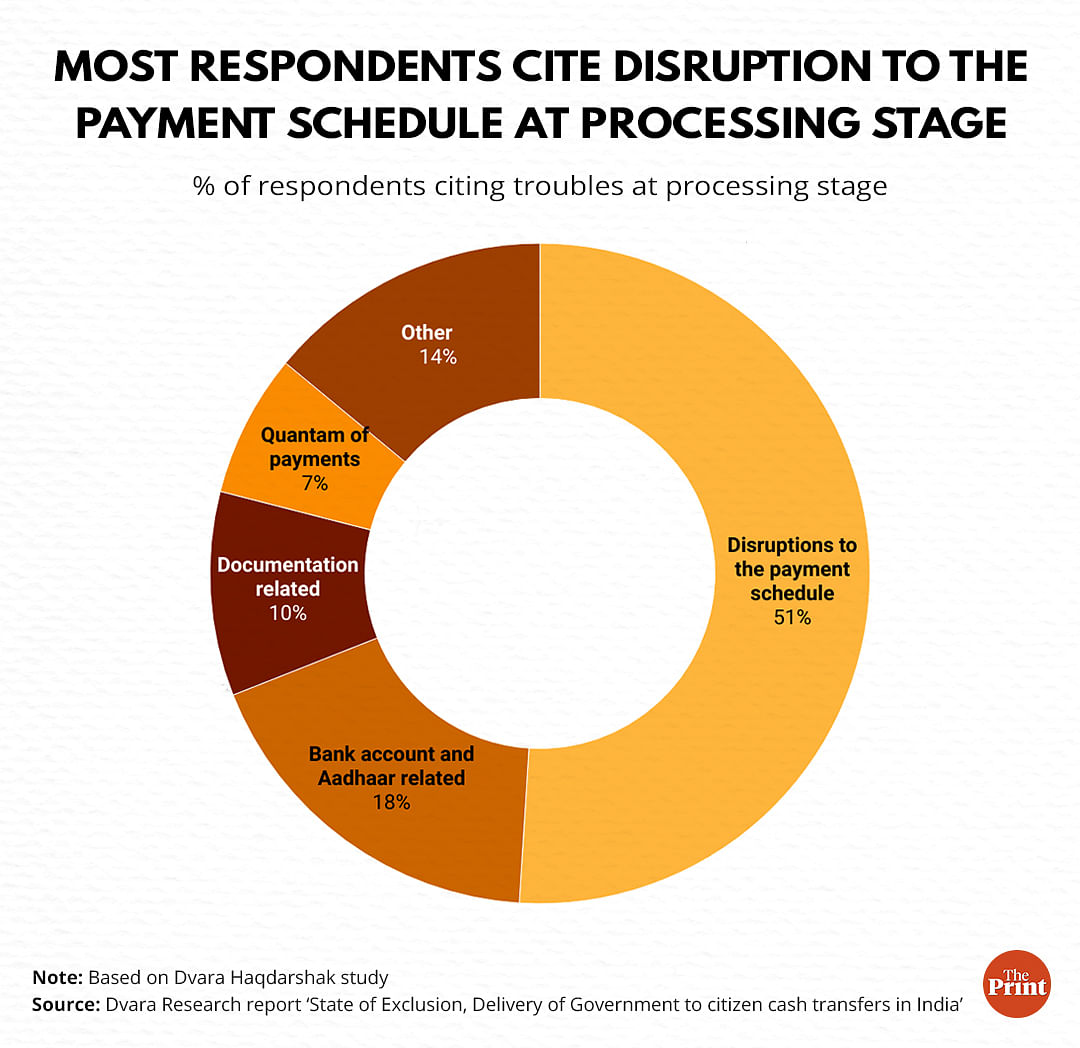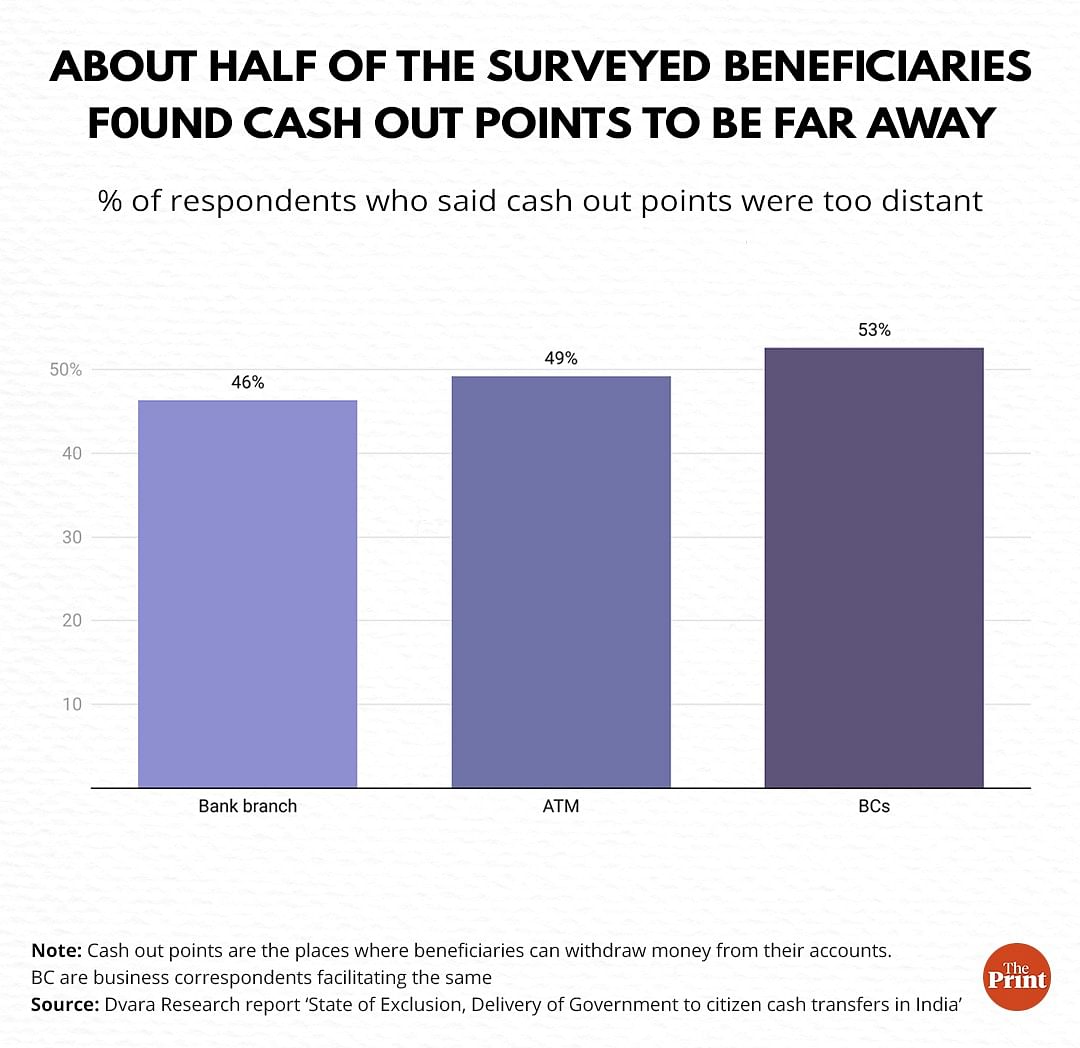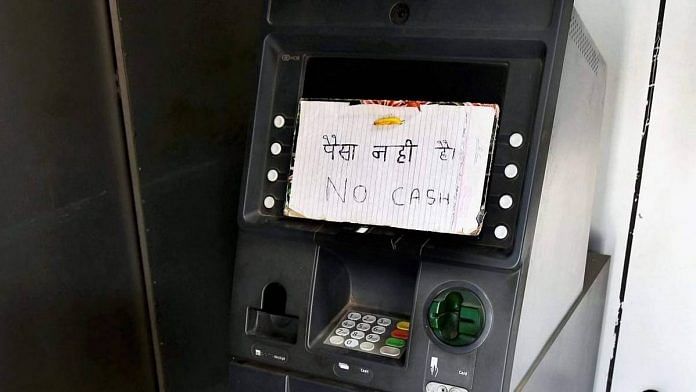New Delhi: Despite the Indian government’s push to digitising financial transactions with beneficiaries of the government’s various welfare schemes, and direct transfer of money to accounts, a study by a Chennai-based policy research institution suggests that these beneficiaries continue to face problems in receiving the aid.
There are about 313 welfare schemes provided by 53 ministries in the union government, such as Ujjawala (a subsidised LPG gas cylinder scheme for poor households), the PM Kisan scheme for farmers and theMahatma Gandhi National Rural Employment Guarantee Act (MGNREGA), which are are now routed via direct benefit transfers (DBT), ensuring that the amount due to beneficiaries is put directly into their accounts.
A study by Dvara Research, titled Delivery of Government to Citizen Cash Transfers in India, released in Delhi Friday, mentions the four stages through which a beneficiary must pass to claim benefit under any scheme and explains the hurdles in each.
These stages are pre-entry stage, entry stage, benefit processing stage and endpoints, states the Dvara Research report.
While technology has been used to make the system more efficient and transparent, the study noted that there are some fundamental problems — not always technological in nature — which resulted in a hold up for beneficiaries.
According to one of the panelists at the discussion which followed the release of the report, Rakshita Swamy — who leads the Social Accountability Forum for Action and Research (SAFAR) and is visiting faculty at the National Law School University of India — these hurdles are a result of years of ignoring the fundamental problems pertaining to the payments to the “rights holders” even before the technology arrived.
“If you look at the popular discourse and most of the funding to reform service delivery, most of it has gone towards investments in technology and streamlining payment processes. The fundamental problems that social justice programmes suffered from existed long before the digitisation process began, and continue to be unaddressed. These include continuing focus on targeting, whereas evidence has clearly indicated the strengths of universalising access, inadequate budgetary allocations and poor accountability of government functionaries towards citizens,” she said.
Swamy added: “Technology is not the solution to all the problems faced by the rights holders and hence we need to acknowledge that and provide them with platforms through which they pursue their own redress individually and collectively. They have expressed their problems, it’s time we listen to them”, she said.
ThePrint reached joint secretary DBT Bharat, Saurabh K Tiwari, on email, but received no response till the publishing of this report. The copy will be updated when his response is received.
A look at the various stages of the process of claiming benefit under government welfare schemes and the problems faced in each, as described in the Dvara report.
Also read: Many unorganised workers’ accounts not Aadhar-linked, e-SHRAM shows, may not be getting subsidies
Pre-entry stage
According to the report, one has to establish eligibility before claiming benefit under any scheme. The report claims, however, that the government definition of who qualifies as a beneficiary is very narrow, and uses the parameters of the Socio Economic Caste Census as a basis to decide eligibility. The last time this Census was conducted was in 2011.
Entry stage
After establishing eligibility, beneficiaries must enrol for a particular scheme to receive aid under it. For this they must provide all necessary documents (such as income certificate, caste certificate, Aadhaar seeding with the bank and bank account details) and paperwork to prove eligibility.

Using interactive voice response data collected in association with Gram Vaani — which runs social media-based platforms in rural areas of Uttar Pradesh, Madhya Pradesh, Bihar, Jharkhand and Tamil Nadu, for people to call and talk about their community, grievances — Dvara Research analysed 1,017 complaints related to government welfare schemes (MGNREGA, public distribution system, employees provident fund) made by people and found that access to enrollment in such schemes was their biggest hurdle.
According to Dvara’s analysis, mentioned in the report, application and document related issues formed nearly 72 per cent of the grievances.
Nearly 32 per cent of people reported access related problems — either enrolment centres were not available near their house or the official in charge was unavailable. About 22 per cent said that their applications took time to be considered or accepted and about 17 per cent respondents found it difficult to procure the documents required to avail the benefits.
About 13 per cent respondents said that they had to visit the centre multiple times resulting in extra expenditure and loss of time, while nine per cent said they faced bank account and Aadhaar related issues (seeding Aadhaar with the bank account, mapping the account on National Payments Corp India) and three per cent had reported application form errors.
Processing Stage
Once the application is accepted, it goes through processing. The government processes the money, transfers it via bureaucratic channels and finally it lands in the beneficiary’s account. However, before reaching the account, there are backend problems, claimed the report, due to which money doesn’t reach the beneficiary’s account.

Using a Dvara-Haqdarshak (an organisation working on improving technology for better delivery of government welfare schemes) study, in which the think tank interviewed 1500 people who were having problems with DBT, the report claimed that disruption in the payment schedule was a big hurdle being faced by beneficiaries.
According to the report, about 51 per cent respondents mentioned disruptions in payment schedule, which means that their transfers were stopped without any notice or reason, or some instalments were missed or there were delays in settlements. Dvara reported a lack of clear communication to the beneficiaries for such disruptions in payments.
Cash out stage
Even when money reaches the account, it isn’t always possible for the beneficiaries to withdraw the cash, the report had found.

Dvara, along with Centre for Monitoring the Indian Economy (CMIE) surveyed about 80,000 households in the country between the months of January-July 2020. The survey documented the issues faced by the respondents while withdrawing cash received under government welfare schemes.
Once the money is received in their accounts, beneficiaries may either go to the bank, the nearest ATM or even BCs (Business Correspondents), to withdraw from their account. However, all these remained mostly inaccessible for the respondents, the report claimed.
According to the report, 46.3 per cent respondents said that the bank was too far from their home, 49.2 per cent complained about the distance to an ATM and 52.6 per cent found a BC to be quite distant.
Apart from accessibility, nearly 40 per cent respondents said that network errors or failures caused trouble for them in accessing money in their account. This would mean that they would have to return when the networks are working.
(Edited by Poulomi Banerjee)
Also read: There’s a new addition to BJP’s identity politics in UP. It’s called beneficiaries



